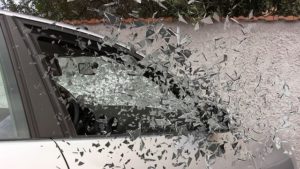
In other words, you must stop even if you were not at fault. In many states, a hit and run can also occur in locations other than a roadway, such as parking lots. If you back into an unoccupied vehicle in a parking lot and fail to leave your contact information, you may be guilty of a hit and run, as well.
The basic duties of an automobile driver
Not only are there duties for drivers when traveling on the roadway, there are also certain duties when a driver is involved in an automobile accident. If the accident resulted in an injury, the uninjured driver is normally required to, at the very least, call 911 to report the accident. It is also necessary for the parties involved in the accident to exchange contact and auto insurance information. Obviously, in order to fulfill these duties, the drivers involved in the accident must stay at the accident scene.
Potential legal consequences of leaving the scene of an accident
There can be more serious legal consequences for leaving the scene of an accident, than merely a personal injury lawsuit. In many states, there are also possible criminal consequences. Being familiar with the hit and run laws in your state will make it easier to understand how to pursue your claims. Also, in some states, a hit and run accident is considered morally reprehensible, because of the understanding we should all have of our legal responsibilities at the scene of an accident. In those cases, punitive damages may also be available for the victim, even if the accident itself was unintentional. If you find yourself in these situations, contact a car accident lawyer for assistance.
Possible criminal consequences of a hit and run
In many states, anyone who leaves the scene of an accident after causing injury or damage, may be guilty of a crime. In Missouri, if injuries or death are caused by a hit and run accident, it is considered a Class D felony, punishable by a fine of up to $5,000 and/or imprisonment for up to four (4) years. A hit and run accident that causes less than $1,000 in damage to the victim’s vehicle, is a Class A misdemeanor. If the damage exceeds $1,000, or the defendant has a prior violation, it is a Class D felony. Arkansas has slightly more stringent penalties. Injury, death, or property damage, resulting from a hit and run accident is a Class D Felony, punishable by up to 6 years in prison and a possible fine of up to $10,000. The guilty party’s driver’s license or non-resident operating privilege is also revoked.
Phantom vehicle claims
In cases, where at-fault drivers leave the scene, a unique situation arises that can affect insurance coverage, as well as the ability to obtain compensation for injuries and property damage. If the driver leaves the scene, then determining the identity of the driver may be impossible. If there are no witnesses who can provide information to help law enforcement find the guilty party, then you may be faced with a “phantom vehicle” claim. Unfortunately, these types of personal injury claims are very difficult to prove.
Insurance companies and phantom vehicle claims
Theoretically, a hit and run case would be covered by uninsured motorist coverage, since you cannot identify the at-fault driver, so no insurance is available. Uninsured motorist (UM) typically covers situations where the person at fault, either does not have insurance or does not have sufficient insurance, to fully compensate you for your injuries. However, in cases of hit and run, many insurance companies will insist that, at the very least, there is some evidence of minimum physical contact with the other vehicle. In other words, without proof of a collision, a driver could simply lose control of their own vehicle, and then make a claim for uninsured motorist coverage.
How to prove a phantom vehicle claim
In a phantom vehicle case, identifying witnesses to corroborate your version of the incident is crucial. If anyone stops to help you after the accident, be sure you obtain that person’s contact information. You will likely need to get their testimony to prove your claim. However, when eyewitnesses are not available, you may still be successful if you remain a credible witness and you can obtain favorable testimony from an accident reconstructionist and other types of investigators.
If you have questions regarding hit and run accidents, or any other personal injury concerns in Arkansas or Missouri, please contact the Cottrell Law Office for a consultation, either online or by calling us as (888) 433-4861.


